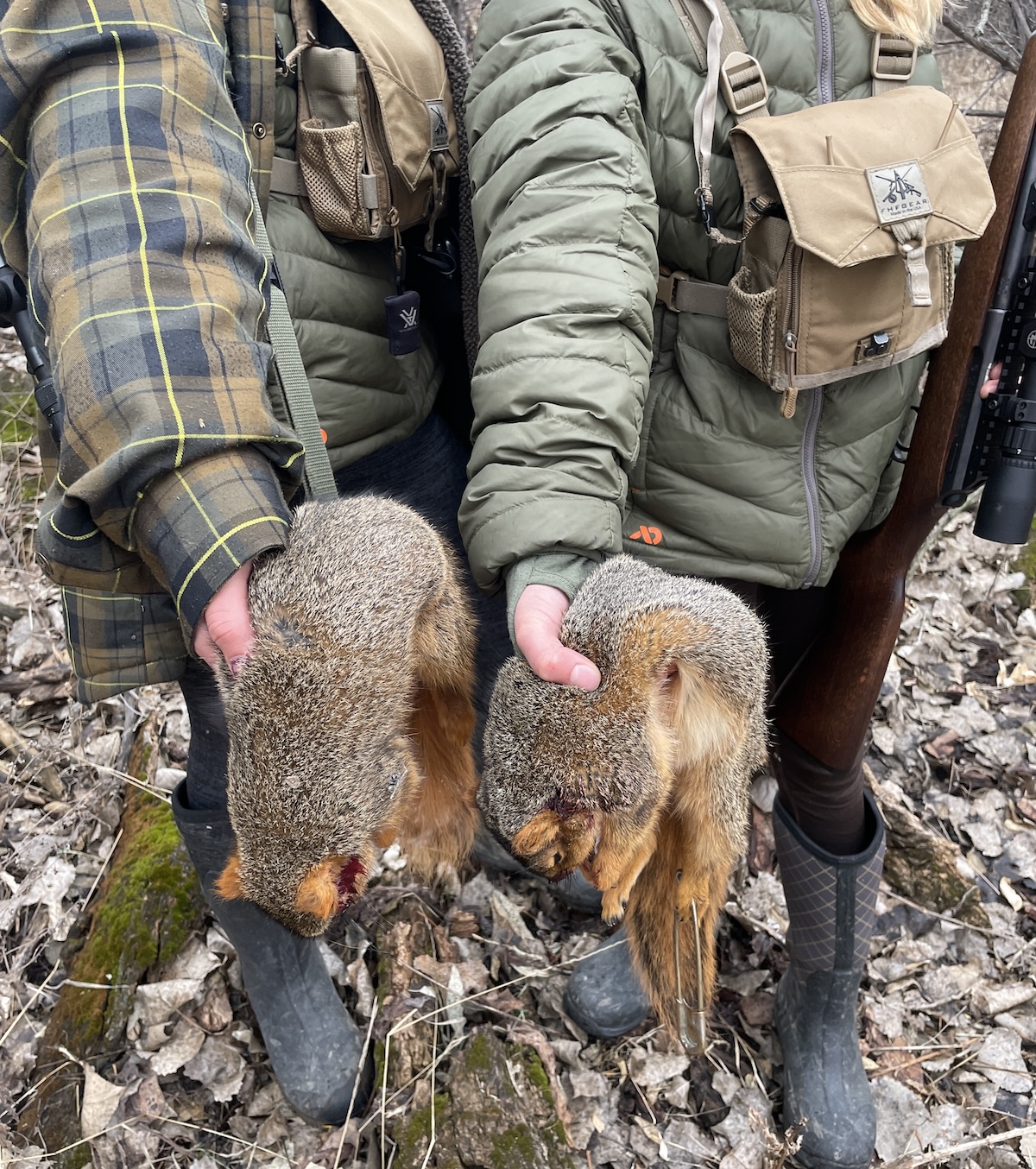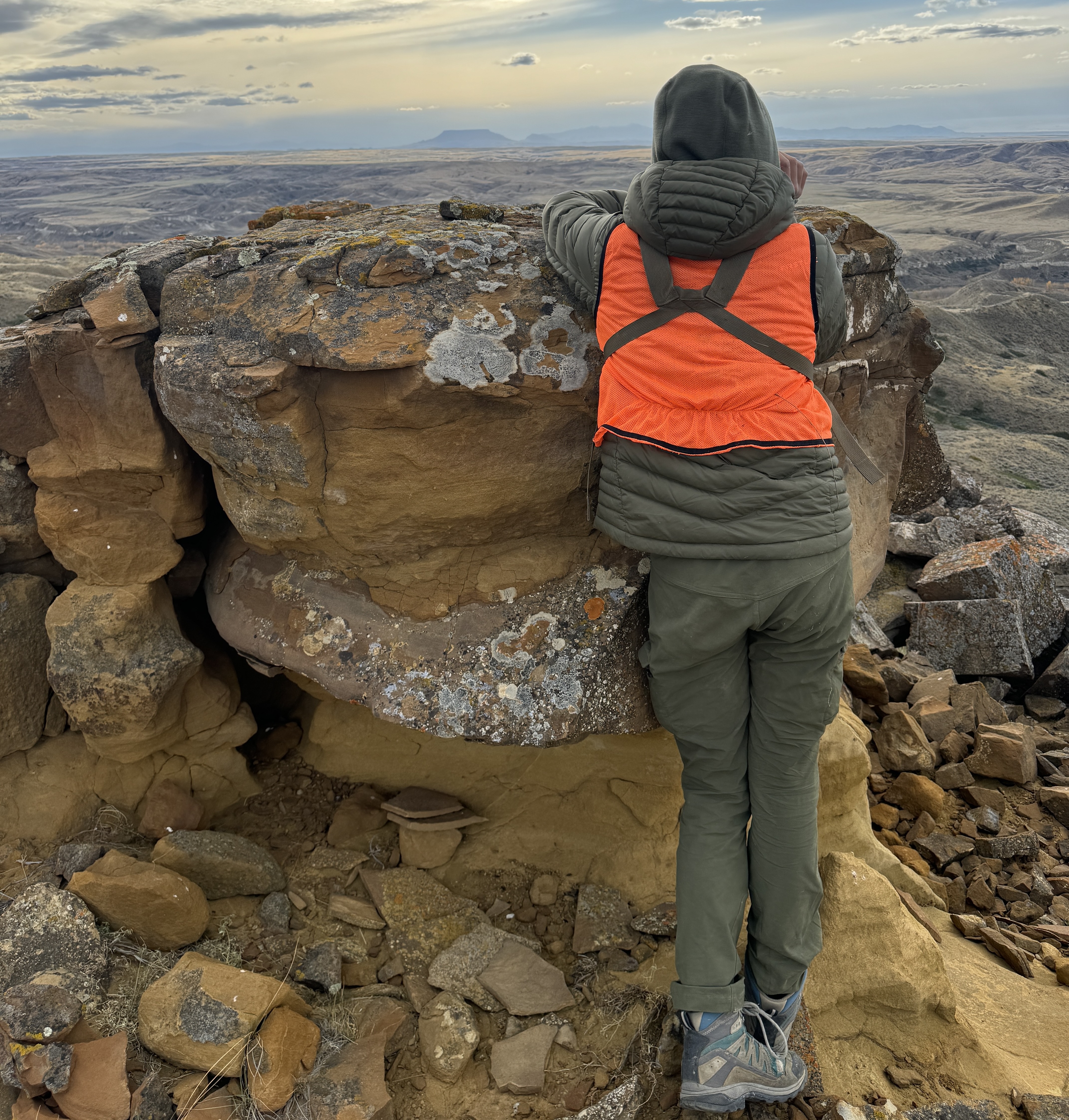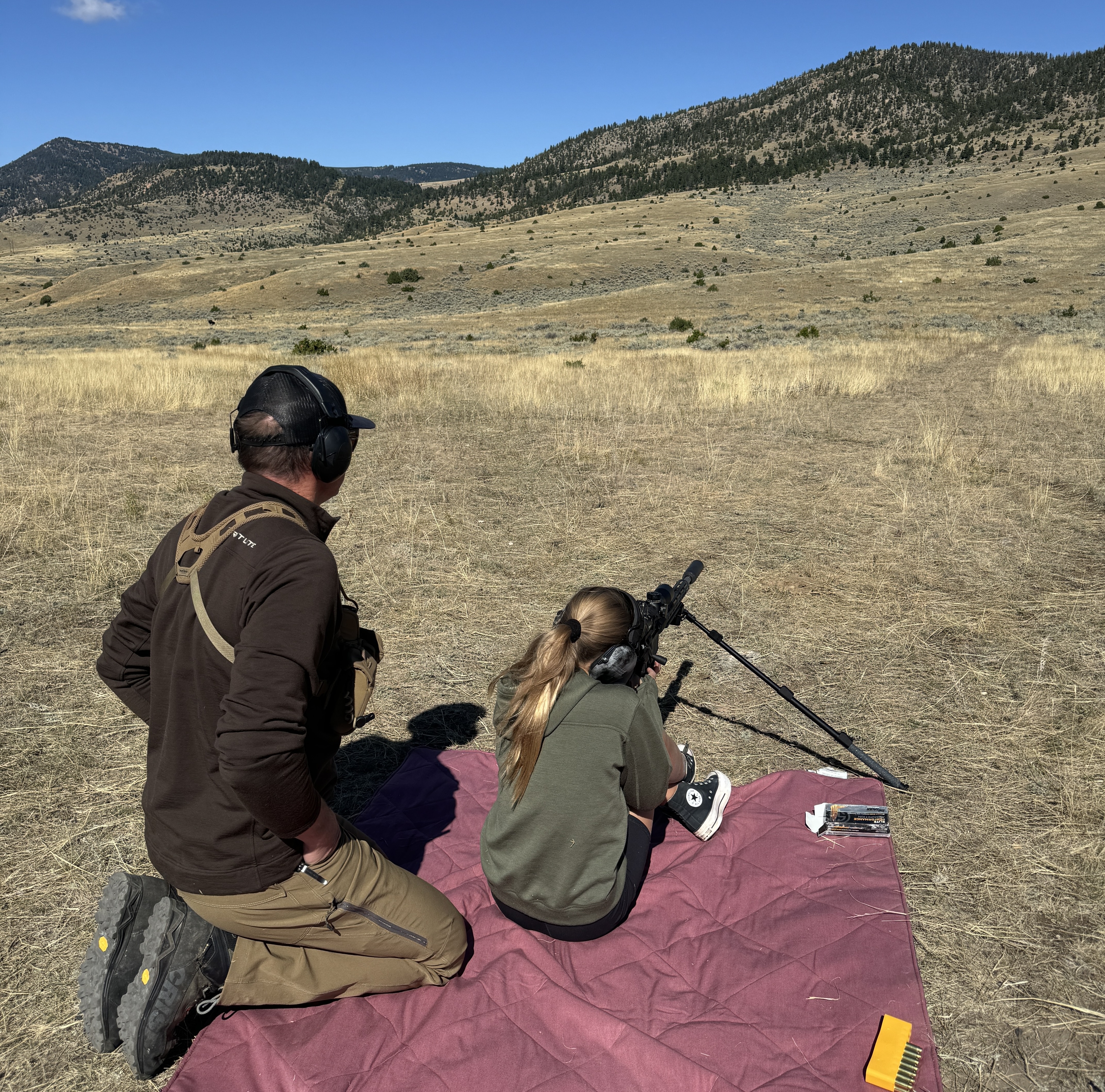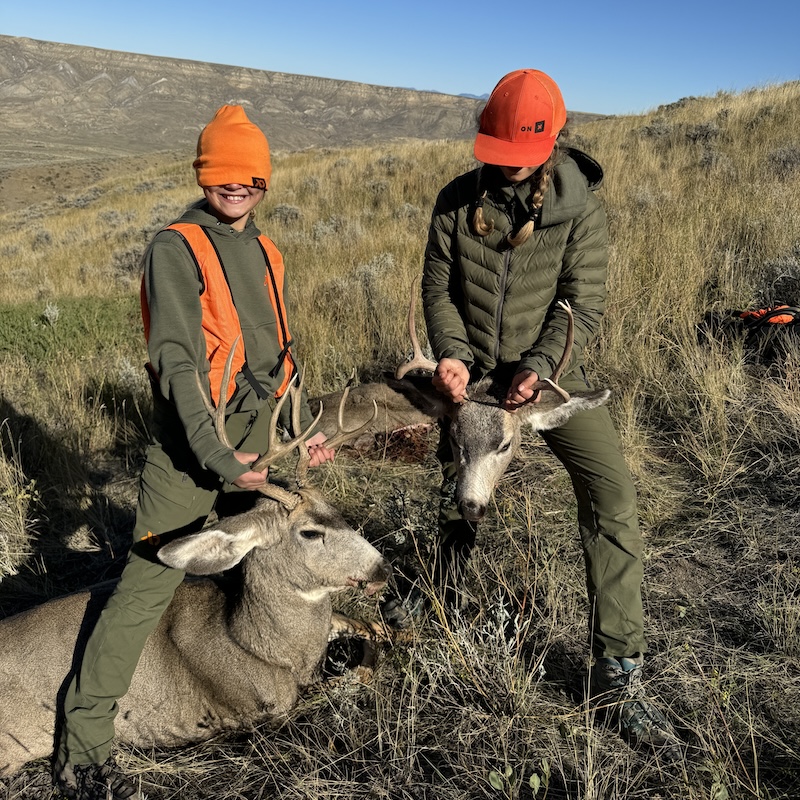I recently took my two daughters on a mule deer hunt during Montana’s two-day youth season in mid-October. One of the most important things that needs to happen when guiding two kids on a hunt is deciding who gets the first shot.
My girls, Aina, age 13, and Mabel, age 10, made a tally of all the animals killed to date by each, which resulted in the older sister getting the first shot, even though she had killed a buck the year prior. That’s right, although she already had a buck under her belt and Mabel didn’t, because Mabel had two gobblers to Aina’s one jake, and Mabel had more squirrels to her name than Aina, Mabel had essentially done more killing and thus agreed to let Aina have the first shot.
Aim Small, Miss Small
My girls have been squirrel hunting for years now, basically since they could handle a bolt action .22 rifle. Montana does not consider squirrels or rabbits as game and thus does not require a hunting license for them, and there is no minimum age to hunt them. If I had to point to one thing that helped them be successful on their mule deer hunt, I’d say it was squirrel hunting.
To me, there is no better classroom for aspiring big game hunters than the squirrel woods, assuming you’re hunting them with a .22 rifle. And this is just as true for adults as it is for kids. Plus, them squirrels taste good!
The squirrel is a small target, often moving a lot and amongst a tangle of branches to boot. Target acquisition is the first great squirrel hunting lesson. Following a squirrel with your eyes and then quickly finding it in your scope once it stops is excellent shooting practice.
“Squirrels are hard,” Aina said on a recent episode of the MeatEater Podcast. “They’re tiny and they run around.”
The squirrel’s small target also teaches hunters to be precise. How do you make precision shots? By using proper form and proper rests. Whether it’s leaning against the side of a tree or using a bipod to sit behind, the same steadiness that helps kill a squirrel at 25 yards will help kill a big game animal at 300. Learning to calm yourself, control your breathing, and cleanly break the trigger will also help kill big game, and again, squirrel hunting affords lots of opportunities for that.
“I was very happy when I could get squirrels on my own. That was a really big achievement for me,” Mabel said. “You trusting me to do that on my own—go out and set up on a squirrel on my own and shoot it and watch it fall down from the tree and hit the ground.”
Day One Frustrations
The first day of the mule deer hunt had plenty of deer, but the stars would not align. Aina had a small buck in the crosshairs, but it spooked before she had a chance to fire. She was a bit wound up preparing for the shot, so I had her dryfire on the buck 3 or 4 times. That calmed her down, but it also used up all the time we had been afforded. The buck joined a group of does and left the drainage we were hunting.
As the day grew long, the discussion of who should get first shot on the second day came up. Would Aina continue to hold that card or would it be passed to Mabel since she had not had it on day one? The pressure of not having killed a buck on day one mounted, and we had a bit of a squabble deciding who would shoot first on day two.
Both girls figured that only one buck could be killed per day, so whoever was not getting the first shot was most likely not going to kill a buck. I thought I had raised more optimistic kids! I was frustrated because instead of hunting during prime time, we were quarreling over something that hadn’t even happened yet. In the end, we all decided that Mabel would get the first shot on day two.
Day Two
Due to unforeseen circumstances, fit for a whole other story, we got a late start the second morning. We were well into gray light as we started our ascent of the mountain. This stressed me out but the girls, not fully understanding the importance of being on the X at first light, continued their trudging without a care.
Upon cresting the first bench, we glassed a group of deer at the upper end of the drainage, another half-mile distant. I couldn’t see any antlers but figured at that distance there might be a forky in the bunch I couldn’t make out, so we made a plan to get closer. A long ravine within the larger drainage itself offered the perfect hide to sneak to within shooting distance of the group.
Our approach was almost too perfect. We poked our heads above a small rise to see two does feeding not 100 yards from us. My youngest inched into position in case a buck showed. The does fed away, and no buck ever materialized. Moments later, I glanced to the horizon to see two bigger-bodied deer silhouetted against a bright eastern sky. A quick peek through the Zulu 6’s revealed two bucks, a three-point and a four-point. We melted into the crusty surface of central Montana.
The bucks surveyed the landscape for 5 minutes and then, deciding all was clear, descended into our little zone. They were feeding on a hillside within our drainage, but their path was not going to bring them within range of my two squirrel snipers. We were out of cover. A straight army-crawl was the only thing that was going to close the final 100 yards. I gave direct orders to keep stomachs glued to the grass and only to move while I was moving.
Five minutes into our crawl, I looked behind me to see Mabel doing a squat-walk; I glared and motioned for her to get down. Later, when I questioned Mabel about her decision to not crawl, she responded by saying that her squat-walk was lower than my crawl, so she figured it to be OK.
The bucks must’ve been extraordinarily focused on the grass that morning because we made it to our next knoll without even an odd look from their direction. In a prone position, three abreast, I lay in the middle, Mabel on my right, and Aina on my left. Bipods were adjusted, rear rests built, and turrets dialed to 350 yards.
Perfect Practice Equals Perfect Shots
The prior three weekends had been spent on public land near our house, ringing steel at distances from 200 yards to 500 yards. Most of my gongs are 8 inches. Shooting prone and seated, they had proved their proficiency at those distances.
I even made up a timed game where they had to shoot three different gongs—twice each, but not consecutively. The distance was only 250 yards, but I was trying to teach fast target acquisition between shots. You know, kind of like hitting an animal on the first shot but then having to make a quick follow-up shot. For the event, Aina’s best time was under 40 seconds and Mabel’s just over a minute.
Mabel struggled getting the bucks in her scope, so I helped her find them by putting them in the scope and then holding the rifle still as she came back to the scope. As Mabel and I settled in, I turned to Aina and asked if she had been able to find them. She replied, “Just let me know when I can shoot.”
We decided that Mabel would take the first opportunity at whichever buck stood broadside first. Aina would then engage the second buck if it would offer a good shot. Both girls chambered 140-grain bullets into their Sig Saur Cross rifles chambered in 6.5 Creedmoor.
Mabel then voiced a moment of doubt and nervousness. I replied that we didn’t have time for doubt, to take a couple of deep breaths, center the crosshairs on the shoulder, and slowly squeeze the trigger. I told her this shot was no different than shooting a squirrel in the eye.
At Mabel’s shot, the four-point started tumbling down the side of the mountain; the three-point stood and watched. I asked Aina if she was on the buck. She replied, “Yes,” and I told her to fire when ready. Moments later, her bullet struck, but it was a touch low. The buck bounded downhill, towards us, dragging a front leg.
(For the sake of not hanging myself, I will explain that Aina’s errant hit was most likely due to my rangefinder having run out of battery that morning. I knew my holdovers but would have to guess the distances. I guessed 300 yards and guessing from where both bullets hit, it was most likely closer to 350 yards.)
The injury did not go unnoticed by Aina, and she vocalized the disappointment of a bad shot. Again, we had no time for that. I instructed her to back off her scope magnification and stay on the buck. He stopped around 200 yards, Aina adjusted her turret, and her second shot put him down.
Relief
It’s hard to express what a guy feels when his two children (now, not looking or acting much like children) double-up on mule deer bucks. It’s a special moment that will probably never happen again. Definitely not under those specific circumstances. I remember thinking, “soak it in, enjoy it.” But with two deer down, there’s work to be done. Pictures need taking, animals need cutting up, and meat needs packing off of the mountain. It was a glorious bluebird day under the Big Sky that went by too fast.
The field butchering was a group effort. I’m proud to say that although it might not be pretty, I think the two of them could work through breaking down a deer and getting it to a state ready for consumption all on their own.
Loaded down with guns, gear, antlers, and meat, we made our way off the mountain. Aina and I would return for another meat haul.
I heard more than a couple stories from other dads after the youth season about missed opportunities and missed shots. I don’t know the amount of squirrel hunting or target shooting their kids did prior to the hunt. But there’s no doubt that the practice my girls put in by squirrel hunting and target shooting contributed to their success that day.
Set your kids up for success. Take them shooting. Or better yet, take them squirrel hunting!
Read the full article here




